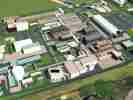|
Caithness.org News Bulletins |
||
| Dounreay News Index | Caithness.org News Index | Front Page Archives |
|
£16 MILLION FACILITY WILL ENABLE
FOREIGN WASTE The UK Atomic Energy Authority has applied for planning permission to construct a new facility for the management of intermediate-level radioactive waste (ILW) at Dounreay. The proposed waste transfer facility is designed to increase the site's capacity for storage of waste from the decommissioning programme at Dounreay. It will also enable the long-term management of liquid waste after it has been conditioned in cement. The new facility will allow a small proportion of this cemented waste to be returned to foreign customers from 2008 under the terms of historical reprocessing contracts.
50 New Jobs Energy Minister Brian Wilson welcomed the proposed development, saying: "The delivery of the site restoration plan by the UKAEA is opening up a raft of opportunities for British industry to develop world-class expertise in the decommissioning and environmental restoration of nuclear sites, with particular opportunities for local companies. "I am determined that the Highland economy should get as much benefit as possible from the de-commissioning process and this is another valuable project which will boost local jobs, both directly and indirectly." Dounreay site director Peter Welsh said: "The proposed import/export facility is a key project in the site restoration plan because it will open a new and additional route for managing ILW. It will unlock more of our storage capacity to receive solid ILW as the decommissioning of the site gathers pace, and enable us to honour commitments made during the days of commercial reprocessing to return the waste arisings to the country of origin." The proposed new facility will form part of a complex at Dounreay where liquid raffinate from historical reprocessing operations is set in cement inside stainless steel drums. These drums are then placed in an adjoining store alongside solid intermediate-level waste from other decommissioning work, such as the dismantling of reactors. At present, the shielded drum store cannot receive this solid ILW when cementation of raffinate is taking place. The new facility will enable cementation and the receipt of waste from other decommissioning work to take place simultaneously. The planned import/export facility will enable the solid waste from decommissioning to be exported at a later date for conditioning elsewhere on the site. It will also permit the remaining cemented raffinate to be removed from the store at some point in the future for long-term storage or disposal, depending on the outcome of a Government review of radioactive waste management policy in the UK. A small proportion of this conditioned waste belongs to foreign operators who sent their spent fuel to Dounreay for reprocessing during the 1990s, and the new facility will enable the return of this waste to begin from 2008 onwards. Mr John Swanson, project manager for the import/export facility, said: "Subject to planning and other consents, the proposed facility will improve our ability to manage our waste arisings and reduce our inventory through the discharge of historical commitments to return waste from commercial work once it is conditioned. We have worked closely with Taylor Woodrow and a number of local companies on the design and ground preparation, and we hope soon to begin the tendering process for the construction contract." Mr Neil Money, director of the
decommissioning task force at Caithness and Sutherland Enterprise,
said: "The construction of this new facility will provide further
opportunities for local manufacturers and suppliers to engage with
whichever major contractor wins this contract. It is up to local
businesses to show that they can compete successfully in this
specialised decommissioning market and hopefully go on to secure
work elsewhere, based upon the skills gained at Dounreay." |
||
